Narrow entryway ideas – 10 expert ways to make a long space seem wider
Narrow entryway ideas, essential design rules for long entrance halls and advice for how to make a narrow space look wider
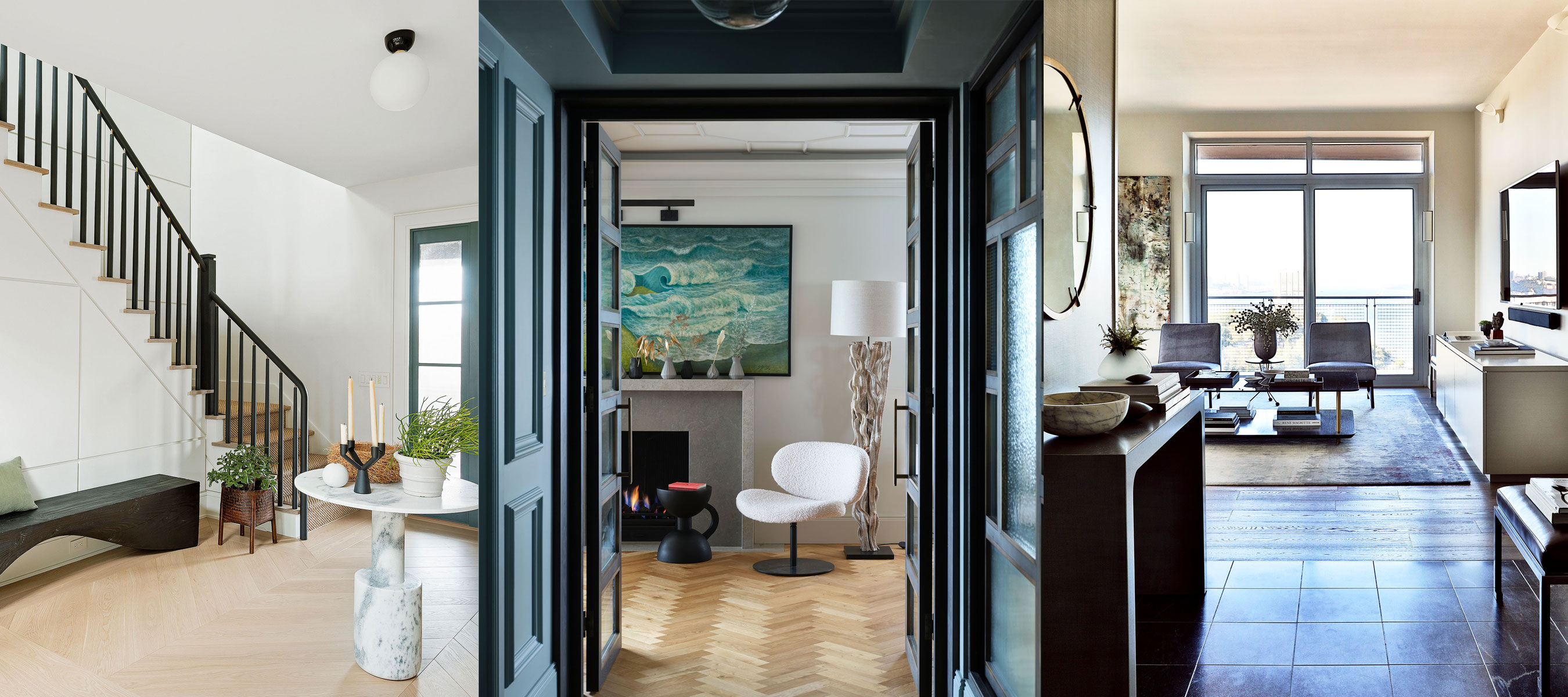

If you have ever had to look for narrow entryway ideas, then you’ll be more than aware of the tricky task of making it a long entryway look wider than it actually is, while desperately searching for interior designer tricks to make your entrance appear warm and welcoming.
You’ve probably spent hours trying out different entryway ideas, rearranging furniture, choosing paint colors and deliberating on rug styles in a frenzied attempt to make your long entrance look more spacious, light and airy.
Do not panic – with some clever tricks of the trade, there are in fact multiple small entryway ideas that wall help turn that awkward entryway layout into something stylish and sophisticated, so don’t give up just yet.
Narrow entryway ideas – 10 expert-approved layouts
Give your narrow entryway a much-need update with our curated selection of interior design-approved layouts, entryway color ideas, lighting inspiration and more.
1. Use color to lift a long entryway
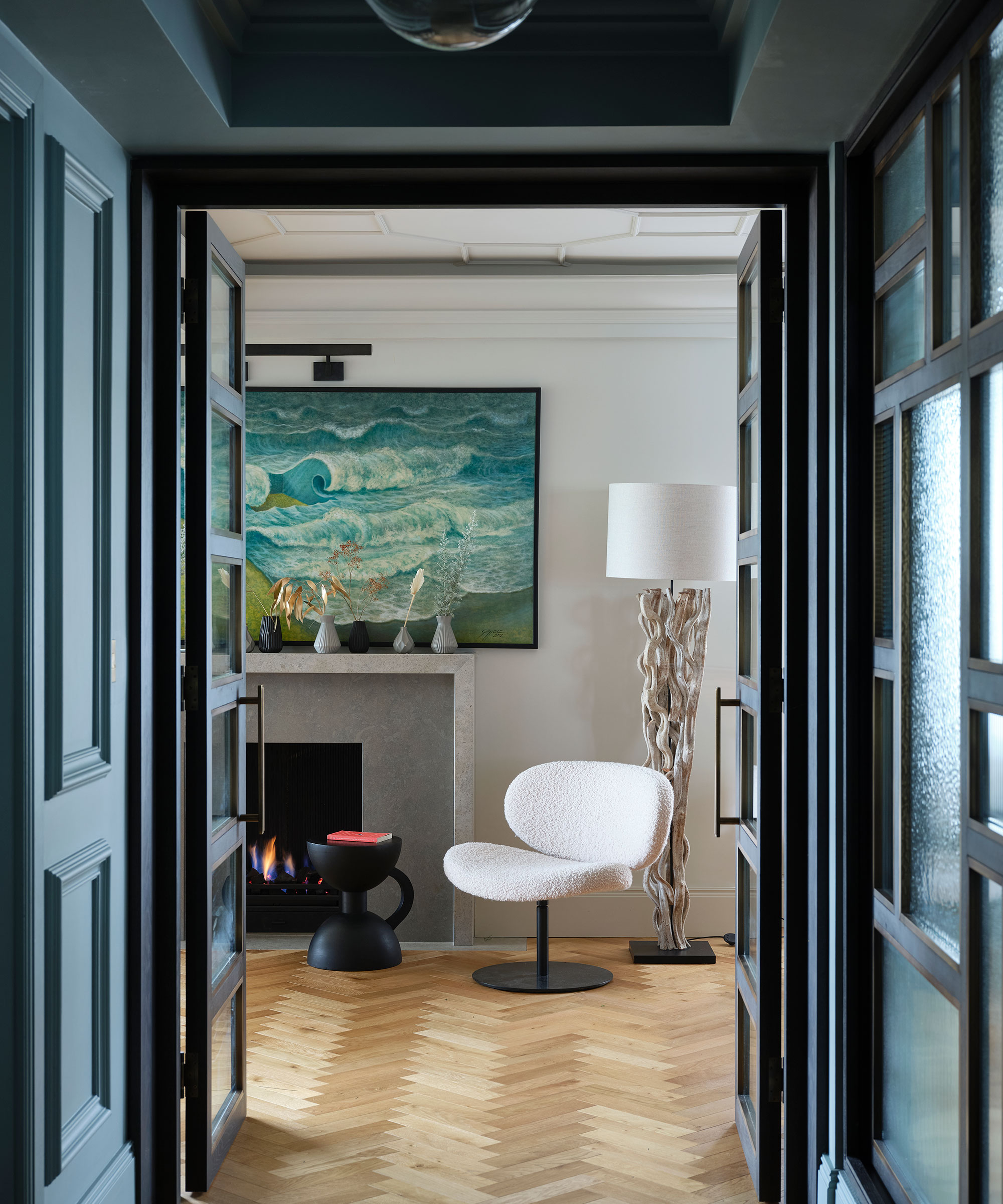
'A narrow entryway can often be on the dark side,' says Edward Bulner, interior designer and founder, Edward Bulmer Natural Paint. 'Light colors will not make a dark space light, but good colors will make it interesting. So go with the vibrant mid to dark colors that can be lifted and lightened with lamplight. Try deep blues or a deeper neutral such as warm cinnamon and taupe.’
Joa Studholme, color curator at Farrow & Ball agrees: ‘When dealing with a long or dark hall it’s best to embrace what you have rather than fight it. Paint it a strong color that will thrill you and your guests when you arrive at the house and make the rooms off it feel bigger and lighter.’
2. Create an impact

When it comes to decorating a long, narrow entryway, many people make the mistake of thinking lots of light colors will help to lift the space, says Nicole Salvesen, co-founder of Salvesen Graham.
‘The truth is that some battles are just not worth fighting. If you paint the entryway entirely white, it has the effect of highlighting the lack of natural light rather than disguising it.’ Instead, the best option is to distract the eye. ‘Do something fun. Use a patterned wallpaper or opt for a dramatic entryway paint color, and then hang lots of pictures on the walls. Make it a nice place to be, rather than somewhere to hurry through.’
3. Light the way
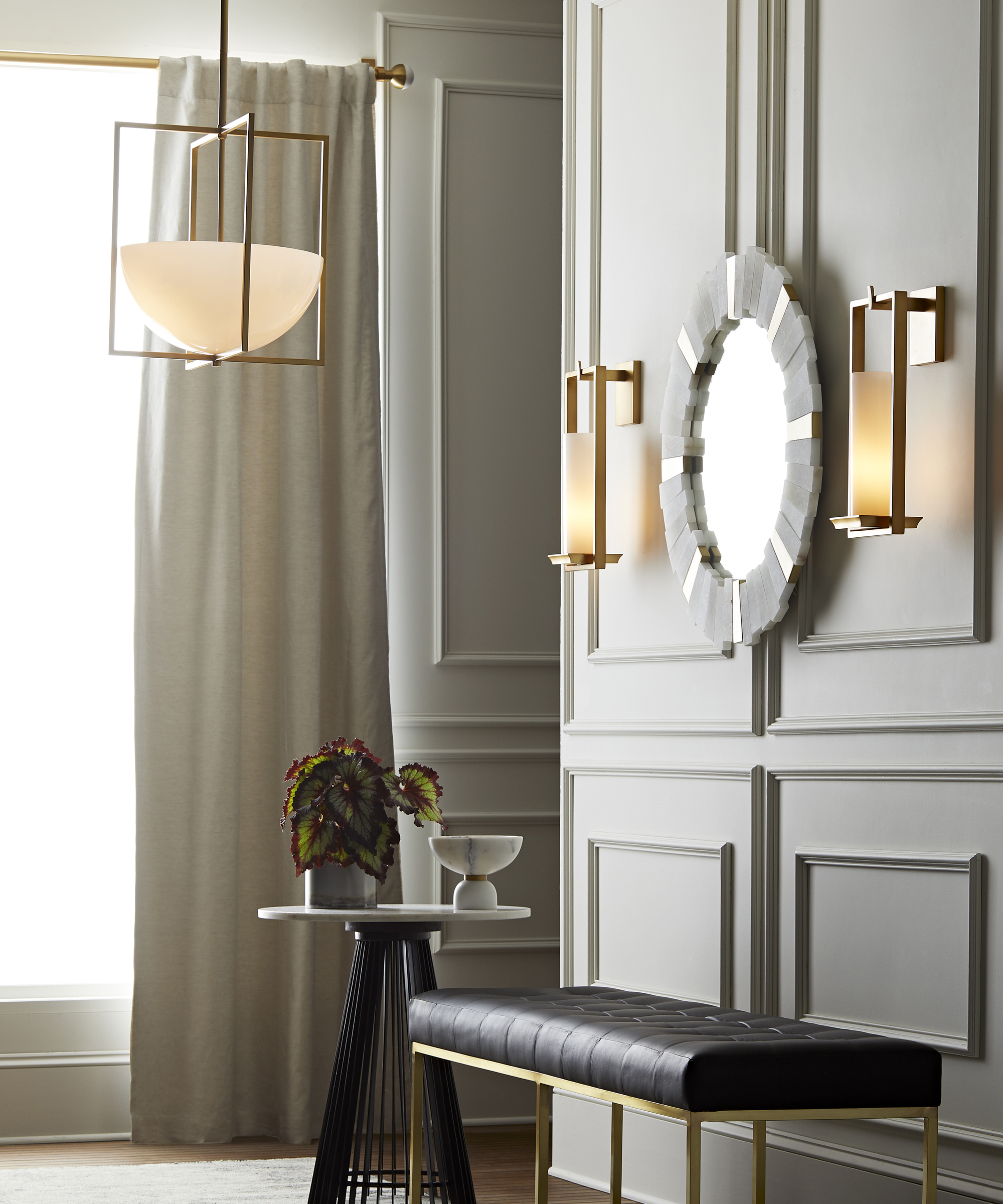
There are various lighting tricks available these days to make an entryway appear more exciting and feel more spacious, says Sally Storey, creative director of John Cullen Lighting.
‘It’s best to aim for drama, not symmetry, by layering the lighting effects in an entryway,’ she explains. ‘Add impact by hanging an oversized pendant and dimming it for mood, but use this in conjunction with downlights that can spotlight a picture on the wall or highlight flowers on a console table.’
Then add a contrast by using wall lights or a downlighter to create a wash along one wall. Another trick Sally recommends is to draw the eye down the entrance by lighting the half-landing or an object at the far end: this helps to foreshorten a long narrow space.
4. Maximize space in a small, narrow entryway
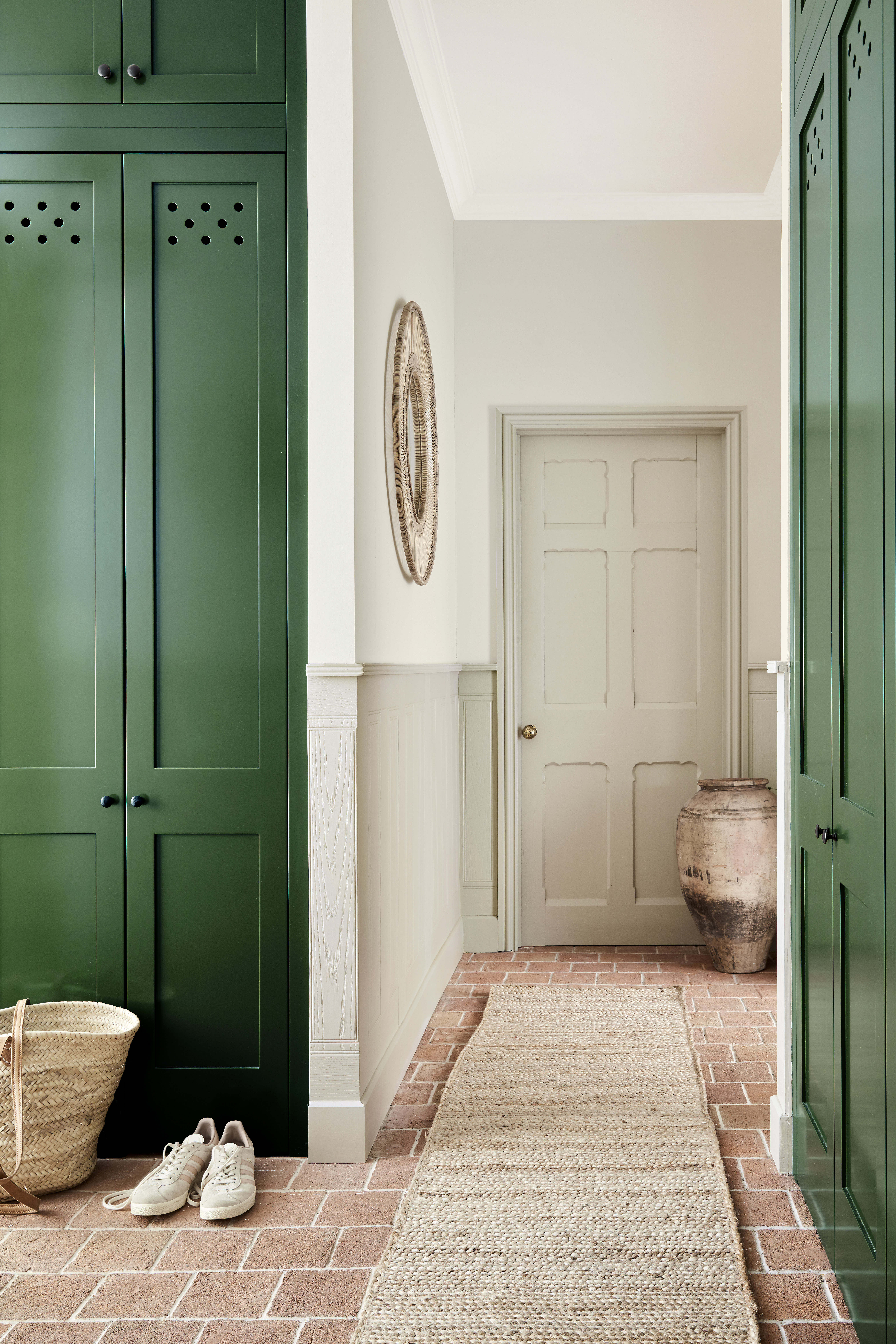
Good entryway storage ideas are essential in a narrow space. This area tends to be a casting-off spot for everyone’s coats, bags, shoes and keys, so be sure to find the best solution that makes the most of every available inch, be that built-in or standalone furniture.
If space is at a premium, or if cost is an issue, there are plenty of flexible freestanding pieces available such as consoles, chests, baskets plus pegs and shelves, all of which make good small entryway ideas for apartments.
5. Raise the ceiling
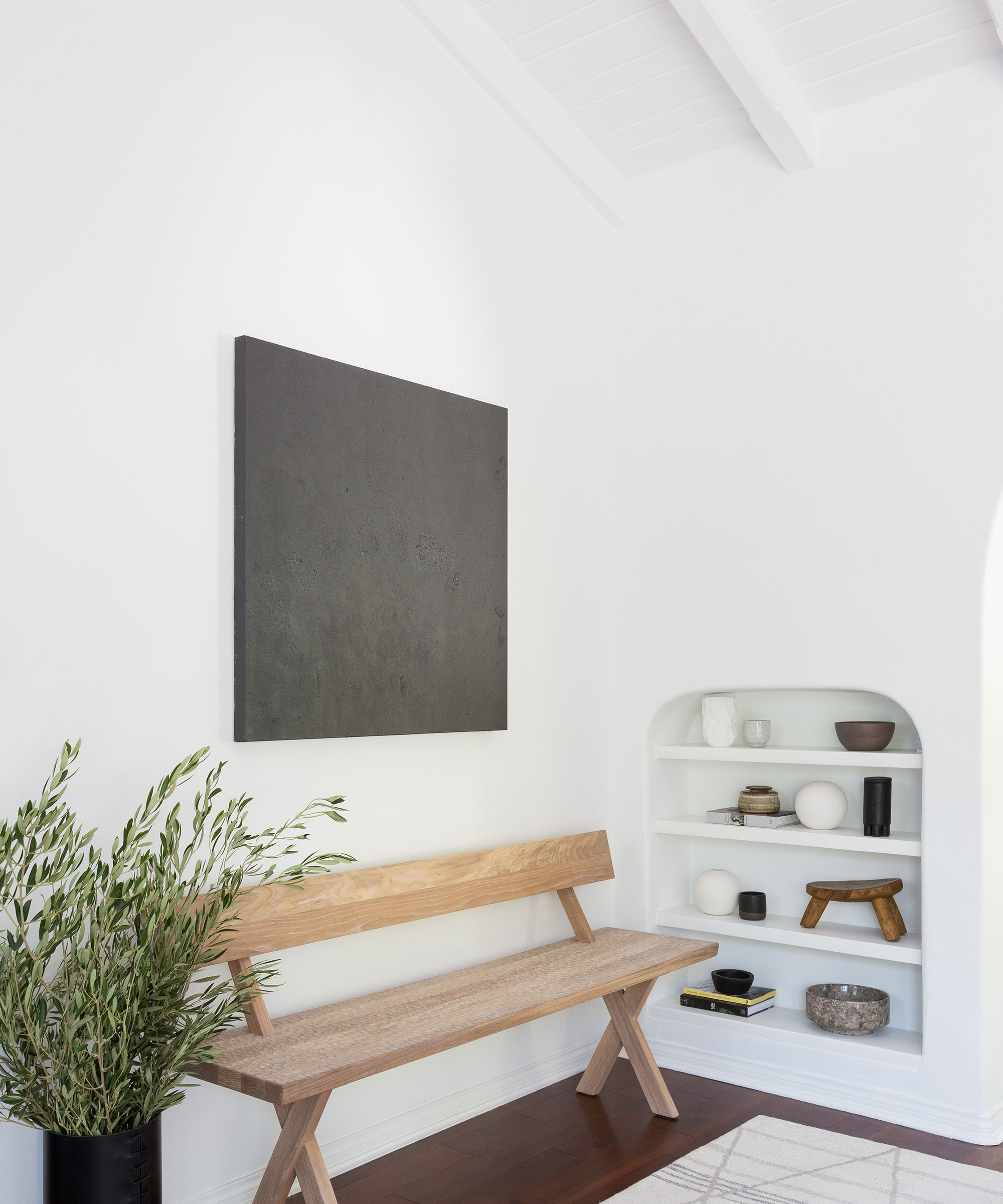
Another way to create the feeling of space in cramped or narrow entryway is to raise ceilings, says interior decorator Charlotte Hughes of Sutton House Interiors. ‘Removing the plasterboard to raise the ceiling can be very effective. If that reveals some rather ugly floor joists, ask whether your builder can replace them with some more attractive structural oak joists without affecting the floor above.’
'In old houses it can pay to investigate the original "bones" of the house though it is important to consider the condition ceilings may be in if you expose them,' says Genna Margolis, founder of Shapeside, who designed this Santa Monica home. The use of white paint here may have helped to conceal flaws as well as create a softer effect that blends in with the room below.
6. Color drench a narrow space
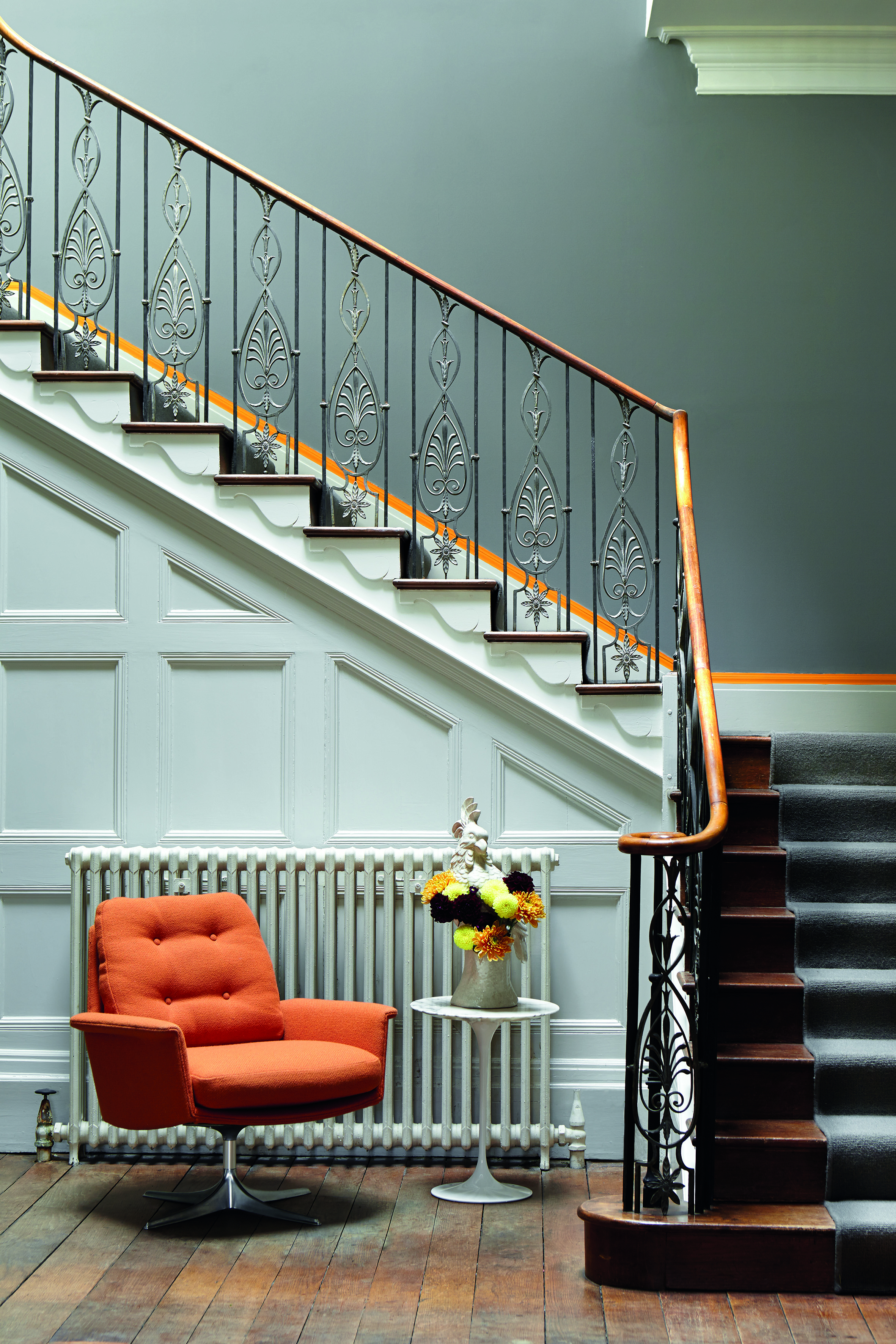
One narrow entryway trend which is currently being adopted is color drenching. ‘This contemporary, cohesive approach delivers high impact by painting woodwork, radiators, the ceiling and doors the same color as the walls,’ says Ruth Mottershead, creative director, Little Greene. ‘This will create a complete scheme, treating each element similarly, and will deliver a design statement when entering or viewing the hallway from other rooms within your home.’
7. Plan accessories carefully
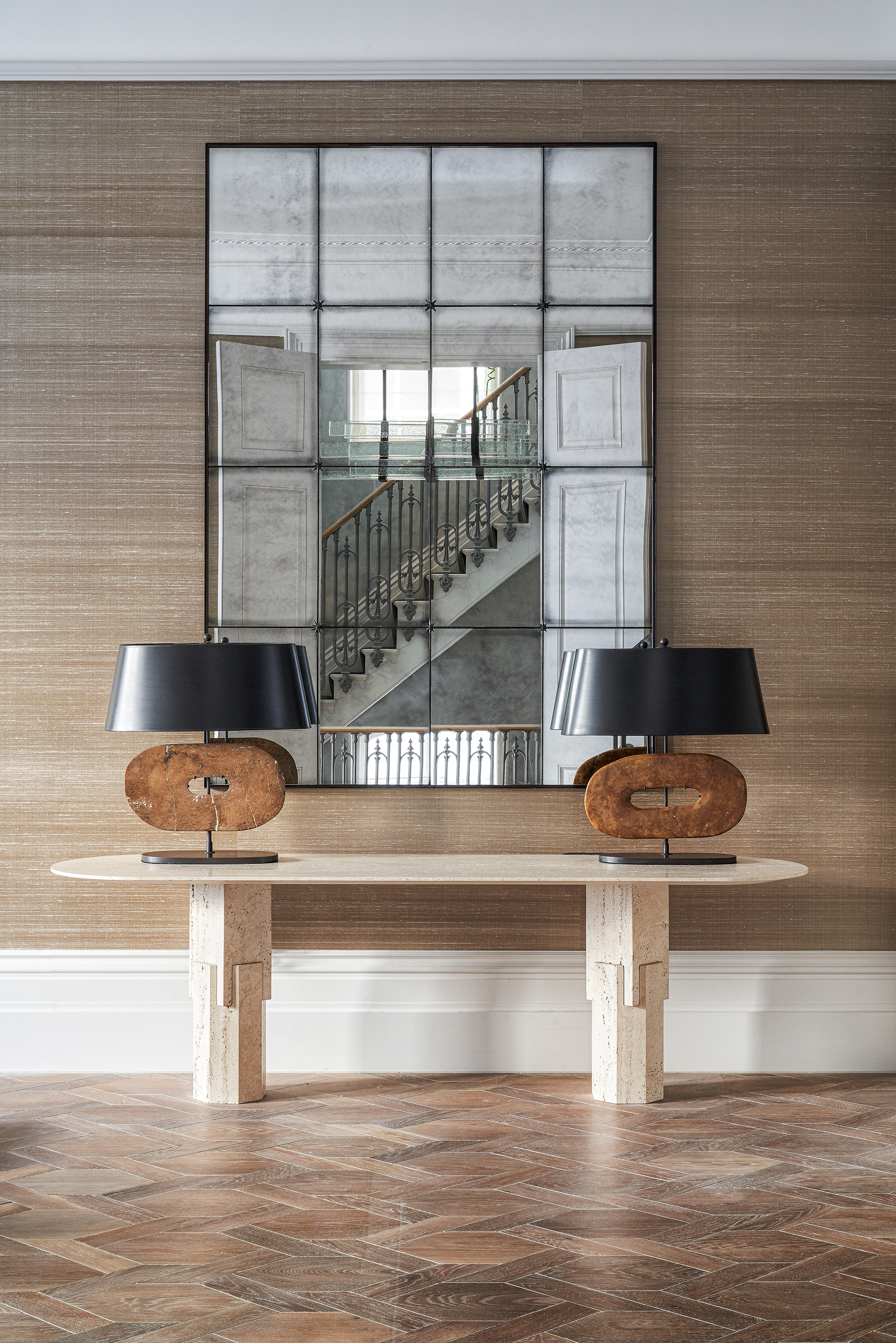
‘A beautifully detailed wall of lightly antiqued mirror can be a great way to expand a tight entryway,' says Claire Sa, director, De Rosee Sa. 'Placing a console and lamps in front of a large mirror softens the coldness of the mirror material.’
A fantastic way to maximize light, well-chosen hallway mirror ideas will help to create the illusion of space – and play a welcome part in making your space feel bigger and brighter, instantly.
8. Be bold and daring
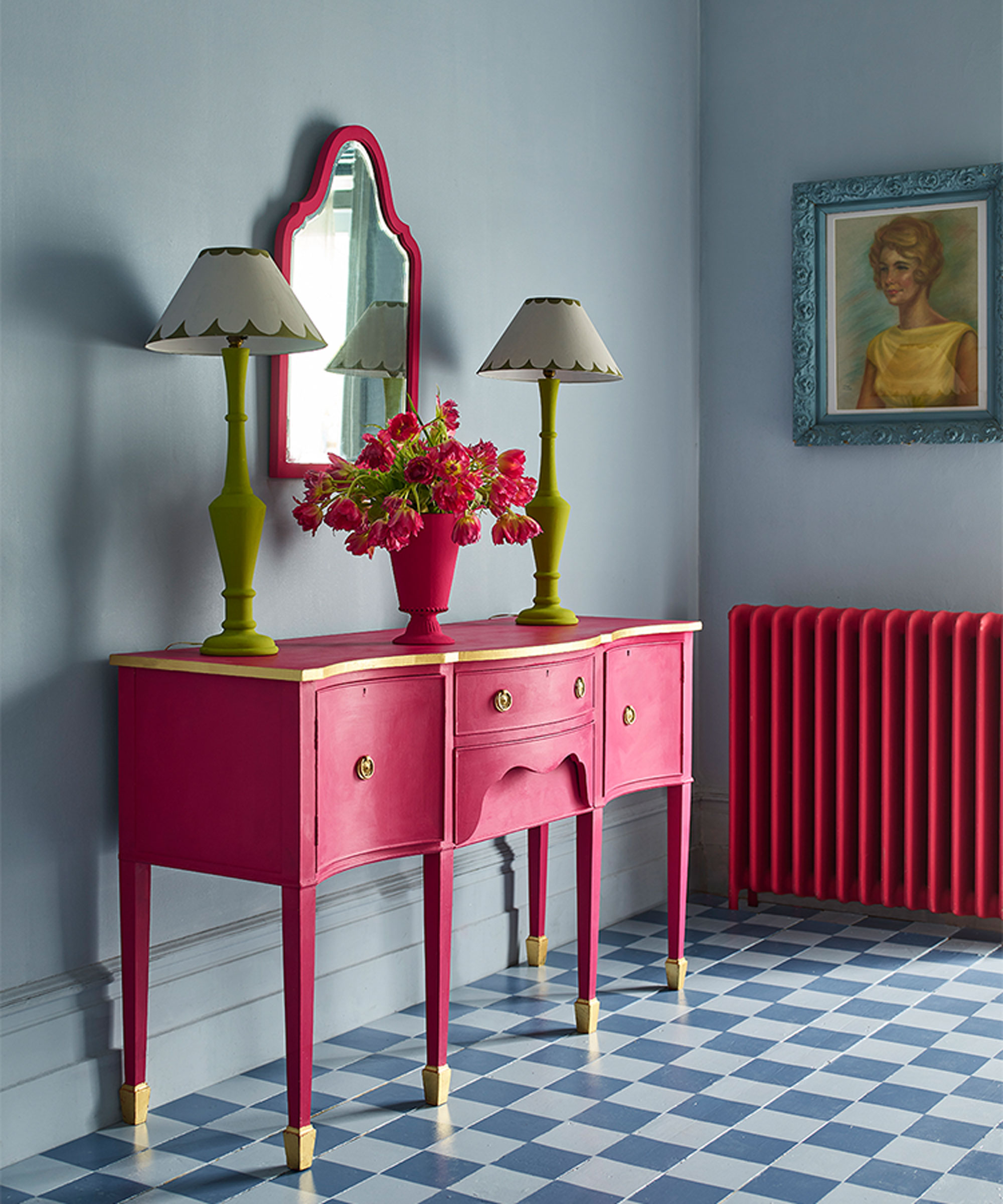
‘Narrow entryways should make a statement about the house and owners as well as being a welcoming space,' says Mike Fisher, creative director and founder, Studio Indigo. 'Small and narrow spaces can be treated in a grand way – “be bold” is my advice.'
'Large details can open up the space, such as using double doors but making them as tall as possible. A pair of facing mirrors helps create the illusion of more space and adds a bit of glamor. Painting the space a light color will not make it feel bigger. Use strong color to make a statement and give personality. Lastly, we are great fans of polished plaster in hallways – it’s practical, tough and has a wonderful reflective quality that makes the space shimmer.’
9. Display favorite art

Walls that are covered with pictures and other wall hangings tend to make a room feel closed in or busy, so simply hang one or two large pieces of artwork to make the room feel wider and more spacious. Ensure there is enough space between the pieces to allow them to shine.
‘Our favorite way to make a statement with art in a narrow entryway is to play with scale,' notes Camilla Clarke, creative director at Albion Nord. 'Make the most of the wall space and choose a large-scale artwork that spans the full height of the door or wall. It will feel bold and impactful.'
10. Keep a narrow space free from clutter
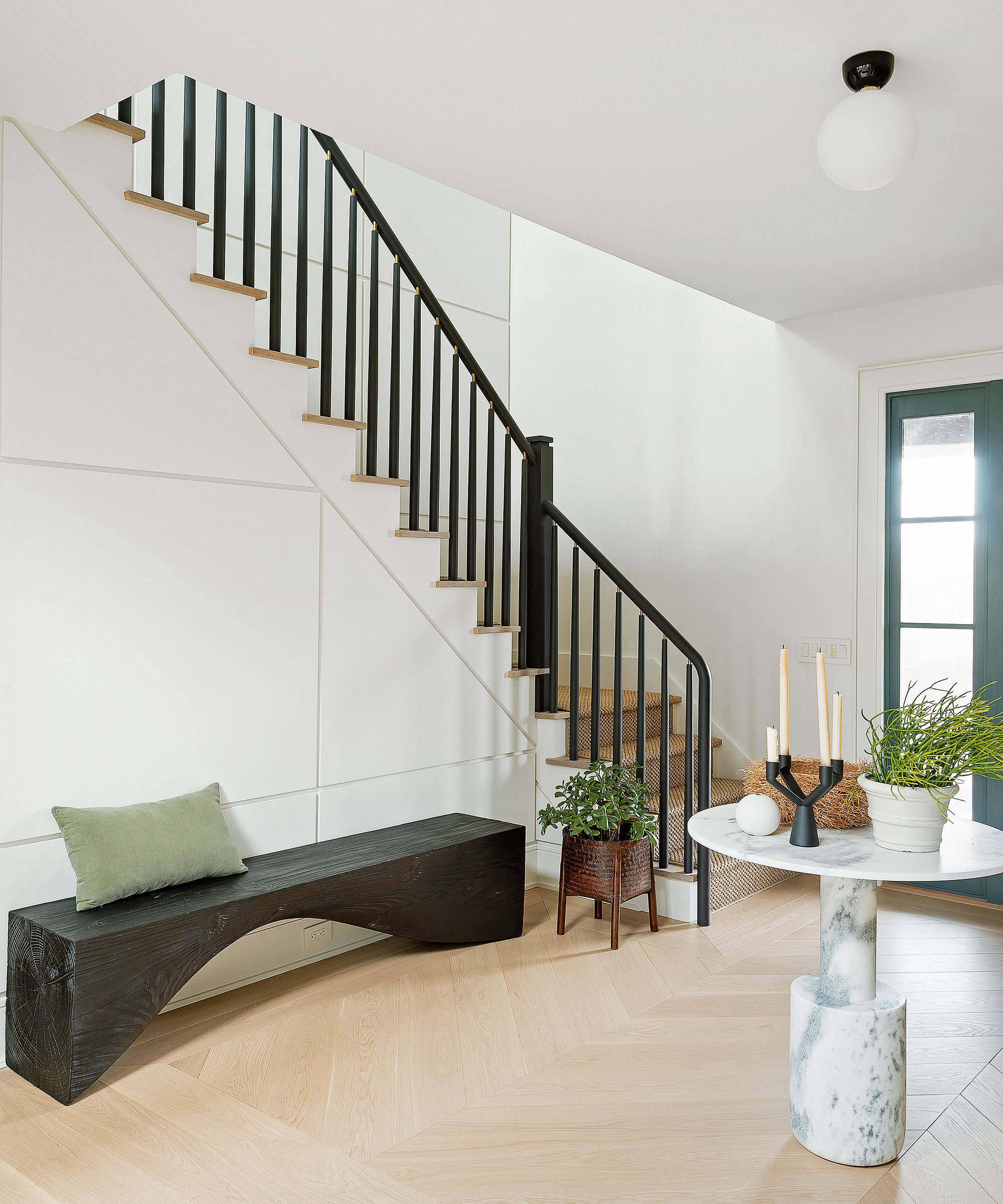
If there’s one thing that’s going to create the illusion of more space in a narrow entryway, it’s decluttering. Make sure you keep your entryway organized by removing unnecessary items, and your space will instantly feel spacious, lighter and more welcoming.
When organizing an entryway, try and keep the floor as clear as possible, too, as it’s one of the easiest ways to maintain a sense of spaciousness. Remove any oversized rugs and plants, and factor in bag, coast and shoe storage to ensure unused clothing and footwear doesn't accumulate.
How do you decorate a narrow entryway?
In dark, narrow entryways, decorating choices make a big difference. ‘There are two approaches to small or narrow entryways,’ says Ruth Mottershead, creative director, Little Greene. ‘Embrace the size and go for deep dark colors and patterned wallpapers, or opt for a trick of the eye and elongate a long narrow space by using a lighter, warmer color at the end of the space, with a slightly darker shade of a similar tone on the walls to create depth.’
Ann Grafton, creative director of Mulberry Home also notes that, ‘using a large-scale design on all walls in an entryway can blur the illusion of where one wall stops and another one begins, making the space feel wider.
How to style a skinny entryway?
‘Entryways can often be narrow with little natural light so consider using color and pattern to create a design scheme that brings warmth and light to the space,' says Ruth Mottershead.
'The entrance is a fantastic place to create a first impression for guests, but also the first area you enter when returning home, so consider how you want your home to make you feel: calm and cocooned or cheerful and vibrant? Don’t forget to consider the views into the entryway from other rooms, how much do you see and how will the design you choose for the entrance flow into the rest of the house?’
Sign up to the Homes & Gardens newsletter
Design expertise in your inbox – from inspiring decorating ideas and beautiful celebrity homes to practical gardening advice and shopping round-ups.

Jennifer is the Digital Editor at Homes & Gardens. Having worked in the interiors industry for several years in both the US and UK, spanning many publications, she now hones her digital prowess on the 'best interiors website' in the world. Multi-skilled, Jennifer has worked in PR and marketing and occasionally dabbles in the social media, commercial, and the e-commerce space. Over the years, she has written about every area of the home, from compiling houses designed by some of the best interior designers in the world to sourcing celebrity homes, reviewing appliances, and even writing a few news stories or two.
-
 'It's a fast reset button' – using the 1, 2 ,3 ,4, 5 decluttering method cleared my persistent mess in seconds
'It's a fast reset button' – using the 1, 2 ,3 ,4, 5 decluttering method cleared my persistent mess in secondsIt's easy, effective and so quick to do
By Ottilie Blackhall Published
-
 Nectar vs Layla – which mattress brand is best on test?
Nectar vs Layla – which mattress brand is best on test?I've set the Nectar Premier Hybrid Mattress and the Layla Hybrid Mattress head to head to help you work out which mattress meets your needs
By Emilia Hitching Published